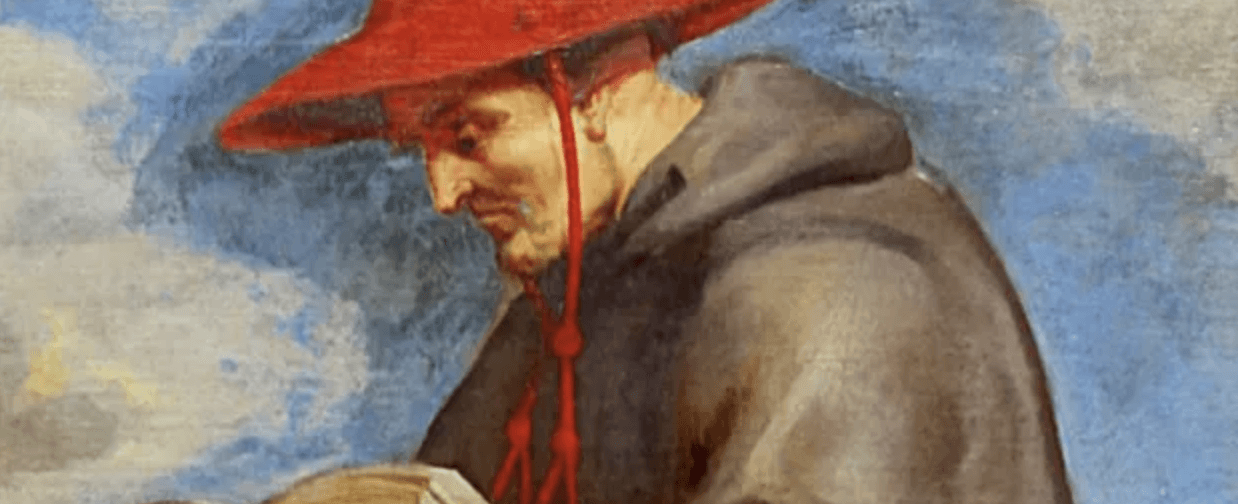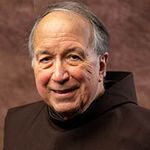Saint Bonaventure: Theologian and Doctor of the Church

On July 15, the entire Church joins Franciscans in celebrating the memory of St. Bonaventure (1217/21-1274), Doctor of the Church.
Early life
Bonaventure was a native of the picturesque Italian hill town of Bagnoregio, about 90 miles from Rome. His father was a physician, who sent him on for studies at the University of Paris around 1235. There he was impressed by the preaching of the Franciscan friars, and especially by the intellectual leadership provided by Alexander of Hales, one of the leading masters of theology at the University, who had joined the Friars Minor in 1236. Upon completing his studies as a young master of arts in 1243, Bonaventure also decided to become a Franciscan.
Student and professor of theology
His superiors recognized the intellectual gifts of the young friar, and Bonaventure spent his early years in the Order at Paris, studying under Alexander and the other early masters at the Franciscan School of Theology. After completing his foundational studies, Bonaventure joined the faculty in 1248, teaching various courses in Scripture and systematic theology, until he was named regent master of the Franciscan School in 1255. Here he quickly became recognized as one of the leading Scholastic theologians of the day.

The medieval Civita di Bagnoregio, province of Viterbo.
Effective guide for his Franciscan brothers
Bonaventure’s eloquence and his writings defending the friars' way of life caused him to be elected General Minister of the Order in 1257. In this role he guided his brothers effectively for 17 years as they moved into many dimensions of ministry on behalf of the Church. He showed prudent, consistent, and balanced leadership, issuing a set of general constitutions as well as a new, standard life of St. Francis.
Negotiator of church union
In 1273 Bonaventure was named Cardinal Bishop of Albano, assisting Pope Gregory X in organizing the agenda for the Second Council of Lyons, where he contributed greatly to the discussions. He died suddenly there on July 15, 1274, after helping to negotiate a union of the church of Constantinople with Rome. He was buried in the Franciscan church in Lyons, the official records of the Council noting that “at the funeral there were many tears, for the Lord had given him this grace, that all who met him were filled with an immense love for him.”

The "Grand Couvent" of the Franciscan friars at the University of Paris, where Bonaventure spent much of his life, was dedicated to Mary Magdalen. This picture portrays the complex as it had developed by the 18th century. The vast church (left) and most of the conventual buildings were destroyed during the French Revolution.
Heritage
Bonaventure left an impressive heritage as a multifaceted writer, from profound works of Scholastic theology to works of devotion and pastoral guidance. His exemplary life and the continual influence of his teaching on the thought and devotional life of the Church led to his canonization by Pope Sixtus IV in 1482. He was declared a Doctor of the Church in 1588 by Sixtus V and became known as the “Seraphic Doctor.”

Portrait of Bonaventure, from the studio of Johann Andreas Herrlein (1765), commissioned for the Franciscan friary of the Frauenberg, Fulda, Germany. Now housed in the Regina A. Quick Center for the Arts at St. Bonaventure University, New York.
All learning must help person toward union with a loving God
Bonaventure emphasizes that all learning must serve the ultimate goal of human life – that is, to help a person realize that he or she is on a journey toward union with a loving God, without whom we are incomplete. The following passage from his treatise, "The Tree of Life," captures this thrust of his thought:
It is true that the end of all desires is happiness, which is ‘a perfect state with the presence of all good things.’ No one reaches this state except by an ultimate union with the one who is the fountain and origin of all goods that are both natural and gratuitous, both bodily and spiritual, both temporal and eternal. And this is the one who said of himself: I am the Alpha and the Omega, the beginning and the end. As all things are produced through the Word eternally spoken, so all things are restored, advanced and completed through the Word united to flesh. Therefore he is truly and properly called Jesus, the only name by which we obtain salvation.
And so believing, hoping, and loving with my whole heart, with my whole mind, and with my whole strength, may I be carried up to you, beloved Jesus, as to the goal of all things, because you alone are sufficient to those who seek you.
For an appreciation of Bonaventure’s contribution to the Franciscan movement and the Church at large, see this rich document issued in 2024 by the General Ministers of the Friars Minor and Third Order Regular to commemorate the 750th anniversary of his death.

The church of St. Bonaventure in Lyons, France, originally dedicated to St. Francis, where Bonaventure was buried after his death. This structure, dedicated in 1327, enlarged the smaller church there in Bonaventure's own time; at the time of his canonization, the church was rededicated to him. Unfortunately, Bonaventure’s tomb was vandalized during religious wars in 1562 and his body burned in the square. The church was raised to the dignity of a basilica in 2019 and underwent extensive restoration between 2021 and 2023. (Photo credit: Kent Wang)
Main image: Peter Paul Rubens, De H. Bonaventura lezend in een boek (detail), Dutch, c. 1620, Lille, France, Palais des Beaux-Arts de Lille
Dominic Monti, OFM
Professor of Franciscan Research in the Franciscan Institute of St. Bonaventure University
Dominic V. Monti, OFM, is a Franciscan Friar of Holy Name Province (USA) and currently professor of Franciscan Research in the Franciscan Institute of St. Bonaventure University. He devoted the greater part of his ministry to teaching the History of Christianity, in particular the history of the Franciscan movement. He has contributed two volumes to the Works of St. Bonaventure series and is author of Francis & His Brothers, a popular history of the Friars Minor.

